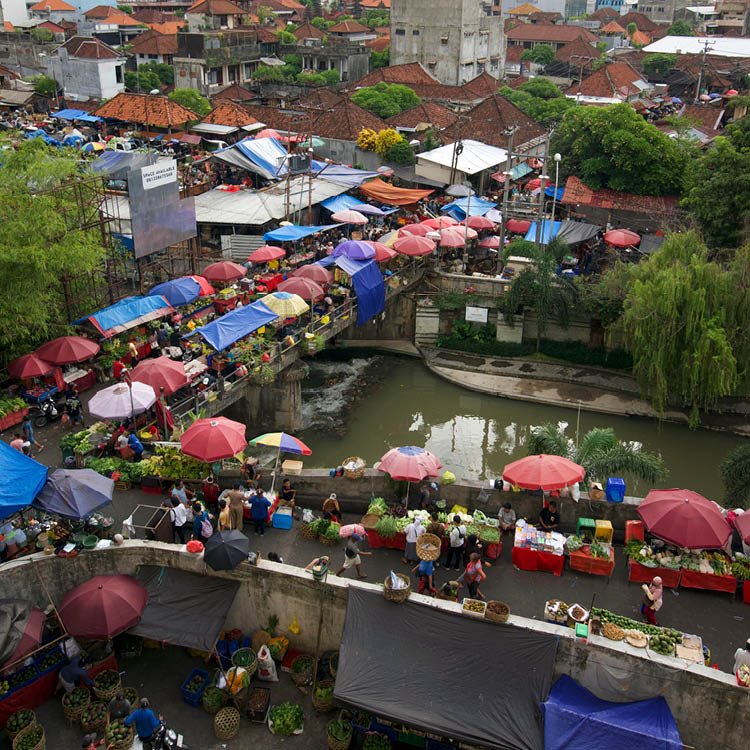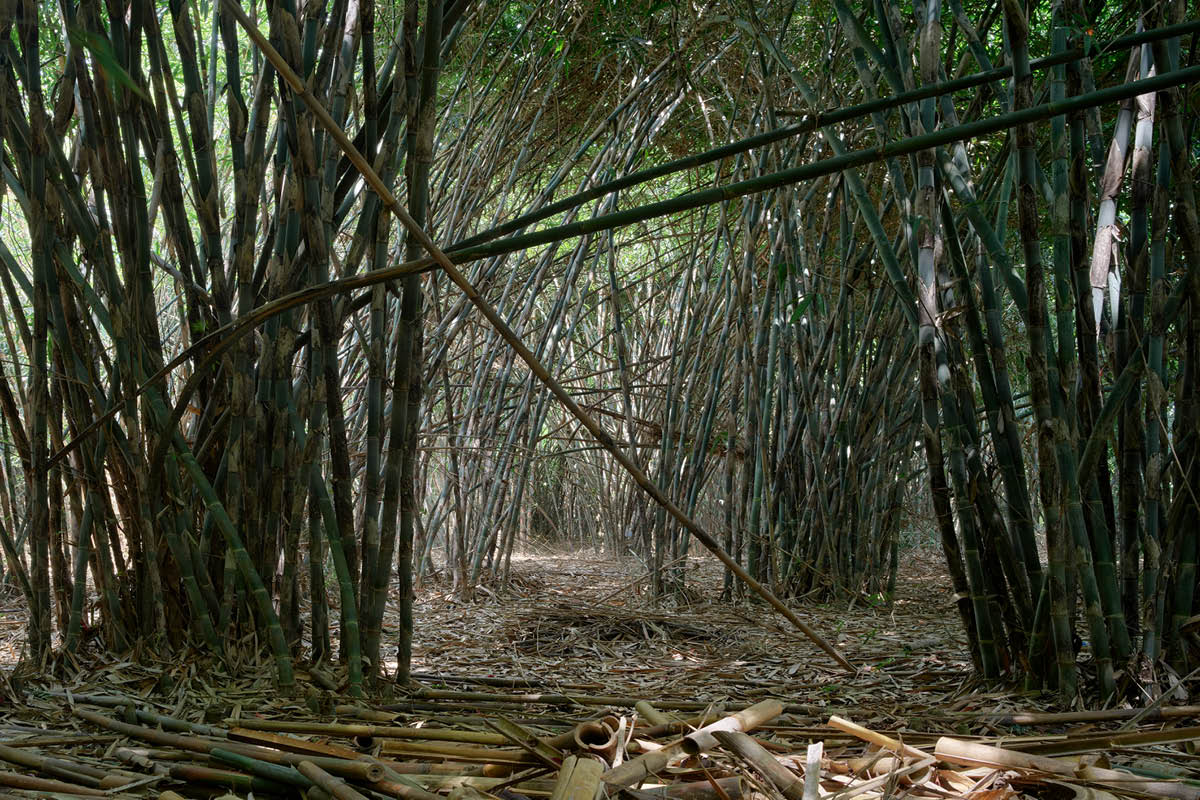gh.avif)
© Georg Hubmann, Bauhaus Earth
Background
Advancing Regenerative Regional Systems through Local Materials, Building Practices, and Collaborative Governance
Home to over 270 million, Indonesia is the world's second most biodiverse country. However, it is currently under increasing socio-ecological pressure. Over 24 million hectares of forest have been lost or degraded due to urban expansion and deforestation, contributing to Indonesia’s status as the world's eighth-largest emitter of carbon. Although the construction sector is a key driver of economic growth, it also exacerbates climate change and ecological degradation. Nevertheless, Indonesia’s renewable natural resources, such as bamboo and timber, alongside growing government support for sustainable construction, present a unique opportunity to adopt regenerative practices. Prioritising nature-based materials could reduce emissions, support forest restoration and encourage resilient urban growth. If implemented strategically, Indonesia could become a leader in regenerative construction.
Building a Regenerative Future for Bali
Bali is one of Indonesia's 38 provinces and a prime example of the challenges and opportunities associated with regenerative development. The island is renowned for its biodiversity and cultural heritage, but it is facing pressure from tourism-driven urbanisation. Over the past three decades, the provincial capital, Denpasar, has urbanised almost 70% of its land area, putting a strain on ecosystems and displacing traditional land uses. Despite its long-standing tradition of using natural materials such as bamboo, wood, and clay, modern developments often rely on carbon-intensive alternatives. Bamboo, in particular, has great potential as it is a fast-growing, carbon-sequestering material. In line with Bali's Net Zero Emissions 2045 targets, a return to nature-based construction methods could transform the island into a model for regenerative, culturally grounded regional development.

Indonesian architecture © Muhammad Ziaurrahman

© Muhammad Ziaurrahman
Local Resources and Building Practices
Bali is under increasing pressure due to limited productive forests. This has led to a heavy reliance on imported building materials and put pressure on its ecosystems. The island has a strong tradition of using local, natural materials such as bamboo, wood and clay in vernacular architecture, as seen in the Bale Banjar. However, these remain largely untapped outside of tourism and low-cost housing. There is a significant opportunity here to transition to regenerative building practices that prioritise locally sourced, low-carbon materials. Bamboo, in particular, holds great potential to support ecological restoration and climate resilience while respecting Balinese cultural heritage. National and regional policies, such as the Timber and Bamboo Roadmap and Bali's Net Zero Emission 2045 Strategy, are providing strong momentum for this shift. However, challenges such as policy gaps, training needs, affordability and limited adoption in mainstream construction must be overcome to create a truly regenerative built environment.
Windows of Opportunity
Bali is uniquely positioned to lead a regional transition towards a regenerative built environment, leveraging a blend of local expertise, policy momentum, and material innovation. Internationally, Indonesia's alignment climate targets and adoption of bamboo building standards is paving the way for sustainable practices. At a national level, large-scale social housing plans and strategies for using nature-based materials provide a platform for integrating regenerative design, with ReBuilt contributing through policy engagement and life cycle assessments of materials. At a regional level, Bali's Net Zero Emission 2045 initiative and its focus on the circular use of natural resources offer a framework for demonstrating how construction can be carried out sustainably using local materials. At the local level, urban planning policies and traditional governance systems, such as the Banjar, provide culturally grounded entry points for embedding regenerative principles into everyday practice. By leveraging these opportunities at multiple levels, ReBuilt aims to support Bali's evolution into a model for climate-resilient, culturally grounded and ecologically regenerative development. More specifically, by:
- Restoring Ecological Systems through Regenerative Built Environments:
In order to actively regenerate ecosystems, reduce emissions, and build climate resilience, it is recommended that the use of nature-based and reclaimed materials, as well as the adaptive reuse of existing building stock and circular construction practices, is promoted.
- Strengthening Urban and Rural Livelihoods through Localised, Inclusive Development:
Incorporating local knowledge, skills and materials into the construction industry has the potential to increase income and promote social cohesion in urban and rural communities alike, providing support for equitable and culturally grounded development.
- Delivering Scalable, Affordable and Climate-Resilient Approaches through Culturally Embedded Design:
The establishment of context-specific, replicable models of regenerative construction is crucial. Such models must respect Balinese cultural identity while offering accessible and climate-resilient alternatives for housing, infrastructure, and public spaces.
Find the full Roadmap Bali here.
Resources
Team

Amelia Mega Djaja
Researcher

Diana Barrera-Salazar
Researcher
No items found.
Bauhaus Earth Alumni
No items found.







